7 Top Generative AI Use Case In Software Engineering
Generative AI enhances software engineering by automating tasks such as code reviews, predictive maintenance, and intelligent debugging. It also aids in documentation, deployment, testing, and security, streamlining processes and boosting efficiency across development workflows.

Table of Contents
- What is Generative AI?
- What are the Benefits of Generative AI?
- 7 Top Use Cases for Software Engineering Processes
- What are the Risks of Generative AI?
- Future of Generative AI
- Conclusion
- Frequently Asked Questions
What is Generative AI?
Generative AI can learn from existing data and generate new, realistic content on a large scale without duplicating the original data.
This technology can produce diverse forms of creative output such as images, videos, music, speech, text, software code, and product designs.
The foundation of generative AI lies in AI models that are trained on a wide range of unlabeled data, allowing them to perform various tasks with additional fine-tuning.
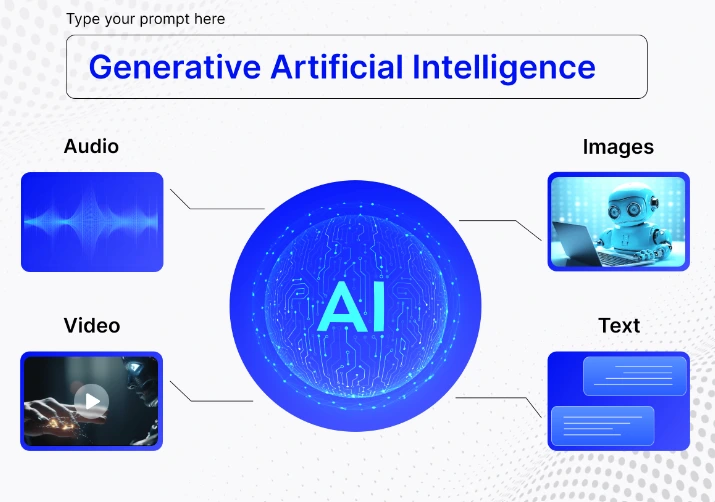
The creation of these models requires advanced mathematical algorithms and significant computing power.
Essentially, these models are advanced prediction algorithms.
Generative AI is commonly used to generate content in response to natural language requests without the need for coding knowledge.
However, its applications extend to various enterprise use cases, including advancements in drug and chip design and material science developments.
The field continues to evolve with ongoing improvements in techniques and technologies.
What are the Benefits of Generative AI?
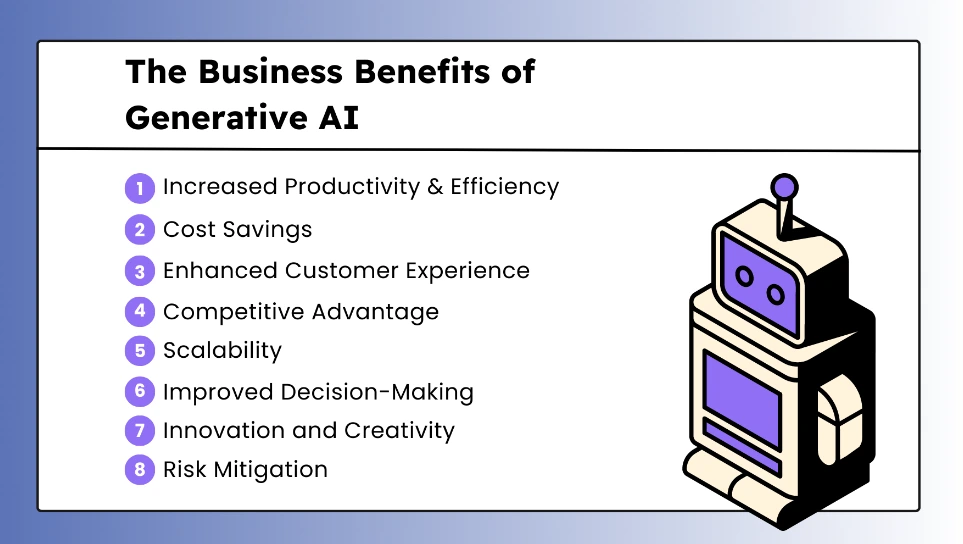
Generative AI, exemplified by foundation models like generative pre-trained transformers (such as ChatGPT), represents a notable advancement in AI architecture.
It finds applications in automating, augmenting human or machine capabilities, and executing business and IT processes autonomously.
The advantages of generative AI include faster product development, improved customer experience, and enhanced employee productivity.
However, the specific benefits vary based on the particular use case.
Generative AI offers a range of benefits across various domains:
1. Enhancing Creativity
Generative AI is breaking down barriers between human and machine creativity by generating original content like images, music, and text.
This empowers users and creators to experiment, producing unique content aligned with their preferences.
2. Facilitating Research and Analysis
In the field of research and development, Generative AI plays a crucial role.
It accelerates the research and analysis process by generating diverse outcomes and solutions.
For instance, it can predict molecular structures, thereby reducing the time required for scientific exploration.
3. Enhancing Personalization
Generative AI serves as a potent tool for personalization.
It enables the generation of tailored content to enhance user engagement.
Additionally, it can create designs and patterns for products based on user preferences, contributing to a more personalized user experience.
4. Providing Expert Assistance
Generative AI helps in obtaining high-quality content, even for users with limited expertise in a given field.
This support opens up new opportunities for users to learn and grow, allowing them to explore different patterns and structures to enhance their skills.
5. Contributing to Economic Growth
Generative AI can create new job opportunities and roles by providing new avenues and expediting growth.
This, in turn, has the potential to drive economic growth by fostering innovation and efficiency in various industries.
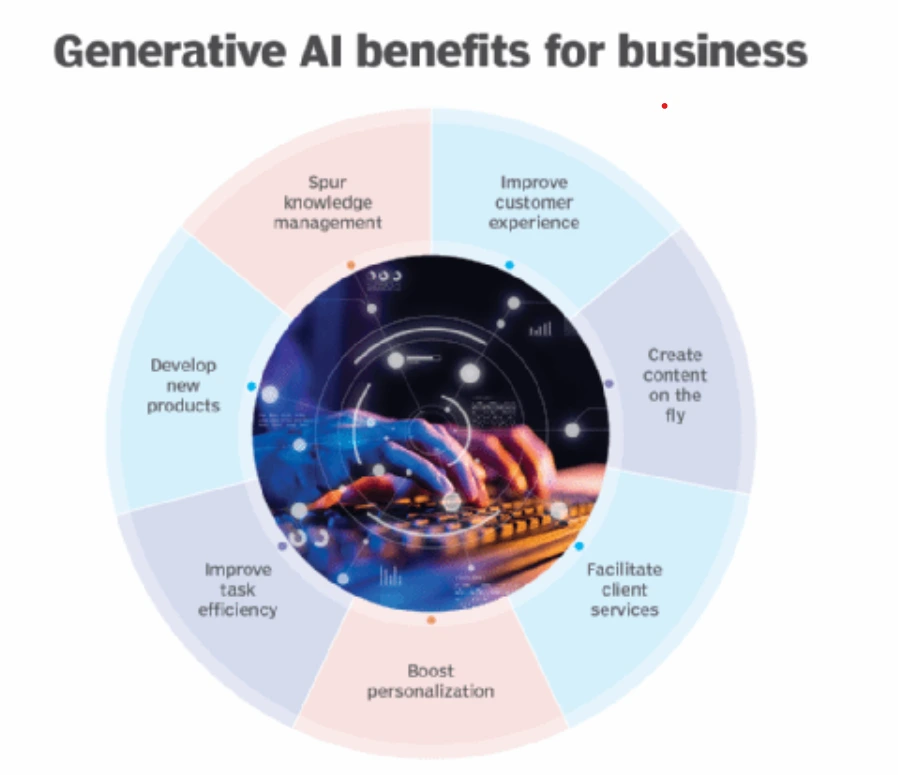
End users must maintain realistic expectations regarding the value they aim to achieve, especially when using a service in its current state, which may have significant limitations.
It's important to note that generative AI can produce artifacts that may be inaccurate or biased, underscoring the need for human validation and potentially impacting the time saved by workers.
7 Top Use Cases for Software Engineering Processes
AI-driven solutions are making a significant impact on software engineering processes, offering transformative capabilities across various domains.
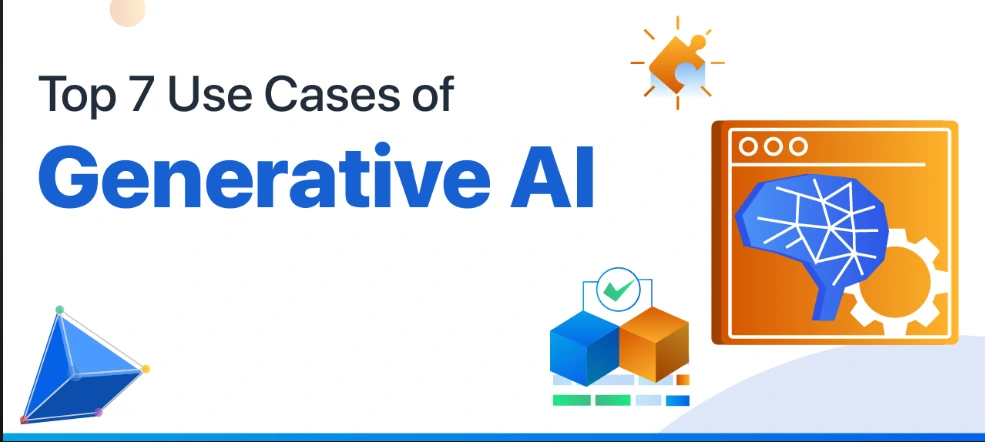
Here are 7 key use cases illustrating how AI is changing software development:
1. AI-Driven Code Review
Gen AI-powered code review tools are streamlining the traditionally cumbersome and time-consuming process.
These tools analyze code comprehensively, identifying bugs and security vulnerabilities while providing developers with valuable insights and improvement suggestions.
Examples include Copilot, CodeClimate, and DeepCode.
2. Predictive Maintenance with AI
AI algorithms predict software failures and defects before they occur by analyzing historical data and patterns.
Integrating IoT devices, 5G connectivity, and edge computing enhances real-time data analysis, ensuring reliability, safety, quality, and cost savings.
3. Automated Testing and QA
AI-driven testing tools execute test cases at scale, identify defects, and enhance test coverage, accelerating the testing process and improving software quality.
Tools like Testim and Applitools offer efficient unit tests and A/B testing capabilities.
4. Documentation
Natural Language Processing (NLP) tools powered by AI help in documentation.
They automatically generate documentation, extract insights from textual data, and enhance communication among team members, improving clarity and accuracy.
5. Intelligent Debugging
AI streamlines bug tracking and issue resolution by categorizing and prioritizing bugs.
It offers intelligent code analysis and comprehension, making bug tracking more efficient and providing predictive bug-hunting capabilities.
6. Deployment
AI helps automate deployments, shorten time to market, and predict optimal deployment times based on historical trends.
It facilitates predictive scaling, self-healing infrastructure, and automated rollbacks to ensure a smooth deployment process.
7. Security, Compliance, and Threat Detection
AI plays a crucial role in enhancing security and compliance in software development.
It identifies anomalies, raises alarms in real-time to prevent attacks, ensures compliance with industry standards, and simplifies threat detection with automated responses.
These use cases demonstrate the diverse ways in which AI is positively impacting software engineering processes, from code development and testing to deployment, security, and compliance.
What are the risks of generative AI?
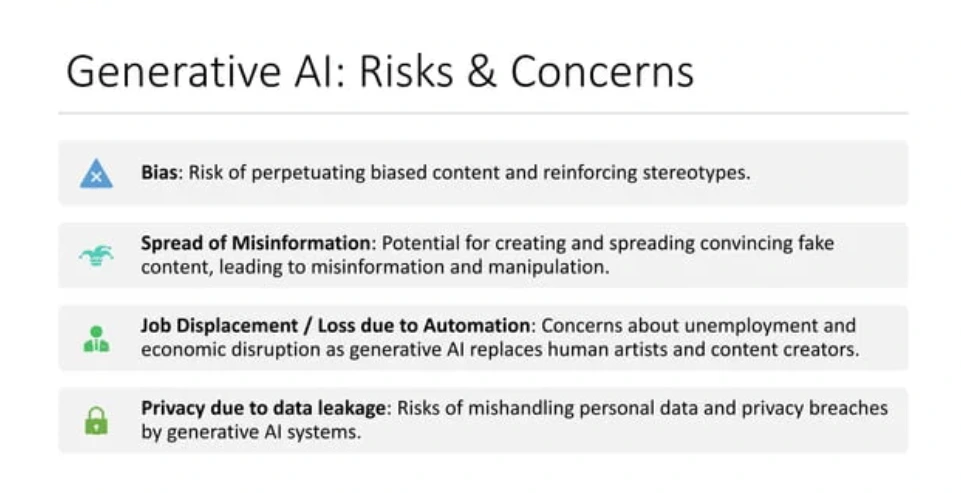
Generative AI poses significant risks that are constantly evolving.
Various threat actors have exploited this technology to create "deep fakes," forge products, and generate artifacts for scams.
Tools like ChatGPT, trained on extensive publicly available data, lack compliance with regulations like the General Data Protection Regulation (GDPR) and copyright laws.
Organizations must carefully scrutinize their use of such platforms to ensure legal and ethical adherence.
Key oversight risks include:
1. Lack of Transparency
Generative AI models, including ChatGPT, are unpredictable, and even the developers may not fully comprehend their workings.
This lack of transparency raises concerns about understanding and controlling the technology effectively.
2. Accuracy Concerns
Generative AI systems can produce inaccurate or fabricated outputs.
It is crucial to thoroughly assess the accuracy, appropriateness, and actual usefulness of generated content before relying on or publicly distributing the information.
3. Bias Issues
Policies or controls must be in place to detect and address biased outputs.
Companies need to manage biased content following company policy and legal requirements to ensure fairness and avoid unintended consequences.
4. Intellectual Property (IP) and Copyright Risks
Current generative AI systems lack verifiable assurances for protecting confidential enterprise information.
Users should assume that data entered into such systems may become public, prompting the need for controls to prevent the exposure of intellectual property.
5. Cybersecurity and Fraud Threats
Enterprises should prepare for malicious actors exploiting generative AI for cyber and fraud attacks.
This includes the use of deep fakes for social engineering, necessitating the implementation of mitigating controls.
Companies should also consult with their cyber insurance providers to determine coverage for AI-related breaches.
6. Sustainability Impact
Generative AI consumes substantial electricity, posing sustainability challenges.
Organizations should prioritize vendors that minimize power consumption and utilize high-quality renewable energy to align with sustainability goals.

Addressing these risks requires a comprehensive approach, encompassing legal compliance, ethical considerations, and technological safeguards to ensure responsible and secure deployment of generative AI technologies.
Future of Generative AI
The future of generative AI holds promising advancements across various domains, driven by ongoing research and technological developments.
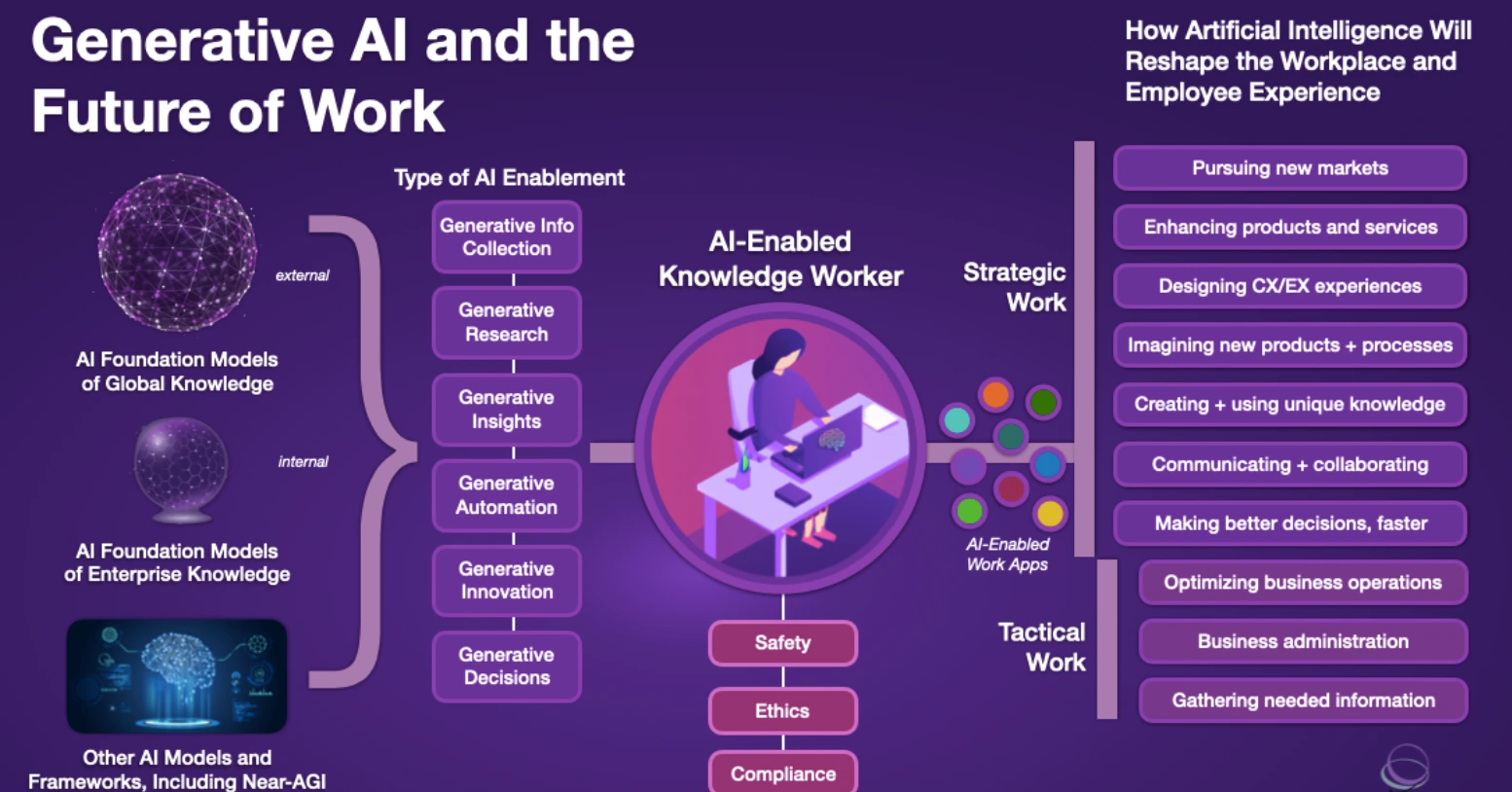
Here are some potential trajectories for the future of generative AI:
1. Improved Understanding and Control
Future generative AI models are likely to exhibit an enhanced understanding of context, allowing them to generate more contextually relevant and coherent content.
This could be achieved through improved training techniques, incorporating a deeper comprehension of language, and refining the ability to respond contextually to diverse inputs.
2. Bias Mitigation and Ethical Considerations
Efforts to address biases in generative AI models will likely intensify.
Research and development will focus on creating algorithms that are more aware of and capable of mitigating biases, ensuring fair and unbiased content generation.
Ethical considerations will play a significant role in shaping the development and deployment of generative AI technologies.
3. Domain-Specific Specialization
Generative AI models are expected to become more specialized for specific domains, industries, or tasks.
Tailoring these models to excel in particular areas, such as healthcare, finance, or creative arts, will enhance their performance and applicability, leading to more targeted and impactful use cases.
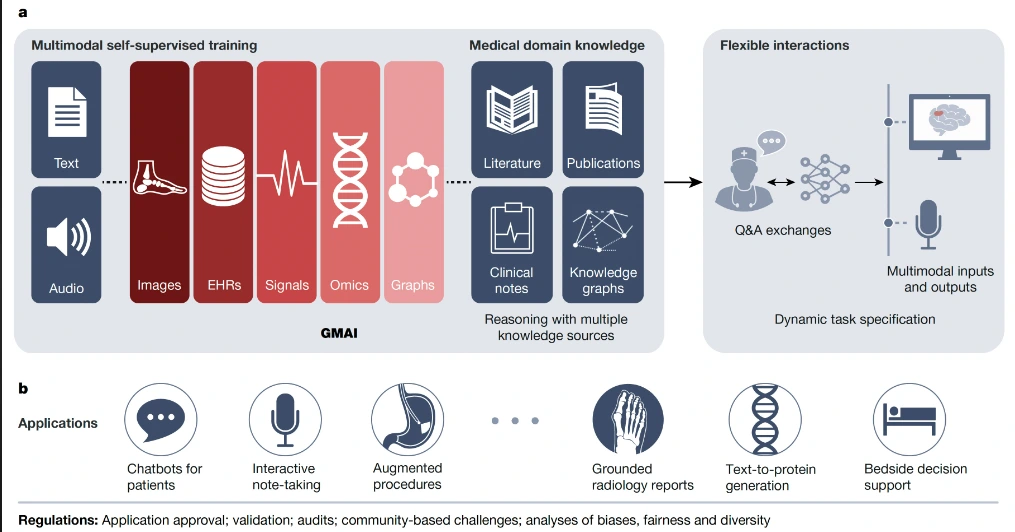
4. Multimodal Capabilities
Generative AI is likely to evolve towards handling multiple modalities seamlessly.
Future models may integrate and generate content across different formats, such as combining text with images, audio, or even video, enabling more comprehensive and versatile output.
5. Explainability and Interpretability
Addressing the challenge of understanding and interpreting generative AI outputs will be a key focus.
Future models will likely incorporate features that enhance explainability, making it easier for users to understand how and why a specific output was generated.
This will be crucial for gaining trust and acceptance in various applications.
6. Continued Ethical and Regulatory Frameworks
As generative AI becomes more prevalent, ethical considerations and regulatory frameworks will continue to evolve.
Governments and organizations are likely to establish guidelines and standards to ensure responsible development and deployment, emphasizing transparency, accountability, and user privacy.
7. Real-World Problem Solving
Generative AI will increasingly be applied to solve complex real-world problems.
From drug discovery and climate modeling to personalized education and healthcare, generative AI will contribute to innovative solutions, pushing the boundaries of what is currently possible.
Conclusion
Generative AI holds immense potential to revolutionize various aspects of software engineering and beyond.
Its ability to learn from existing data and generate new, realistic content has helped in applications such as code review, predictive maintenance, automated testing, documentation, intelligent debugging, deployments, and security.
While the benefits are substantial, it's essential to acknowledge and address the associated risks, such as lack of transparency, accuracy concerns, bias issues, intellectual property risks, cybersecurity threats, and sustainability challenges.
Looking ahead, the future of generative AI promises even greater advancements, with improved understanding, domain-specific specialization, multimodal capabilities, enhanced explainability, and continued ethical and regulatory frameworks shaping its trajectory.
As generative AI becomes more prevalent, its real-world applications are expected to expand, contributing to innovative solutions for complex challenges across diverse domains.
Frequently Asked Questions
1. What are the most common generative AI use cases?
Generative AI has diverse applications, with some common use cases including content creation, such as generating images, videos, music, and text.
It is widely used in natural language processing tasks, facilitating language translation, summarization, and dialogue generation.
Another prevalent use is in creative design, aiding in the generation of product designs, art, and innovative concepts.
Additionally, generative AI is employed for realistic simulation, enabling the creation of synthetic data for training machine learning models.
In healthcare, it contributes to drug discovery and molecular design.
The technology is also utilized in virtual assistants, chatbots, and conversational agents, enhancing human-machine interactions.
2. How generative design AI will be used in 2026?
In 2026, generative design AI is expected to play a pivotal role in product development and innovation.
It will be extensively employed in engineering and manufacturing to automatically generate and optimize design solutions based on specified criteria.
Generative design AI will facilitate rapid exploration of diverse design possibilities, leading to more efficient and innovative outcomes in areas such as architecture, automotive design, and industrial engineering.
By leveraging advanced algorithms and machine learning, it will enable engineers to collaborate with AI systems to create optimized, cost-effective, and sustainable designs, significantly accelerating the product development process and pushing the boundaries of what is achievable in various industries.
3. Can generative AI improve governance & auditability?
Yes, generative AI has the potential to enhance governance and auditability by automating and optimizing various processes.
In governance, AI systems can assist in decision-making by providing data-driven insights and predictions, contributing to more informed and transparent policies.
Additionally, generative AI can improve auditability by automating the tracking and analysis of financial transactions, ensuring compliance with regulations, and detecting anomalies or fraudulent activities.
The technology can streamline auditing procedures, making them more efficient and thorough, while also providing a comprehensive and verifiable trail of decision-making processes for governance purposes.

Data Annotation Workflow Plan
Simplify Your Data Annotation Workflow With Proven Strategies
Download the Free Guide

